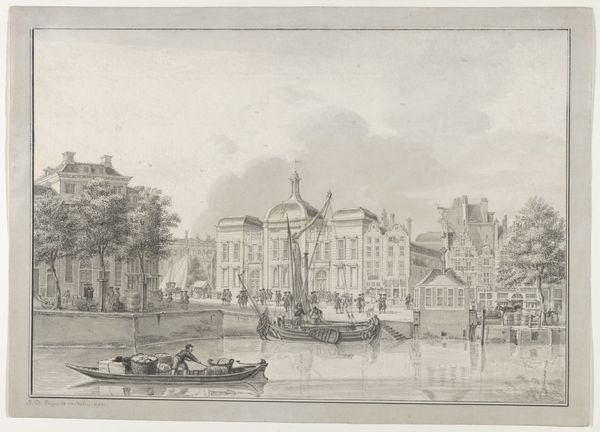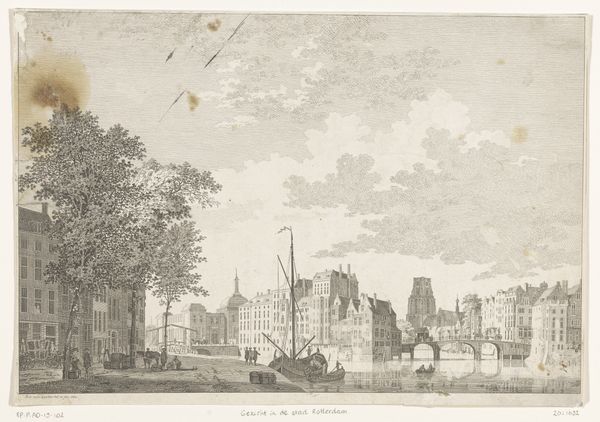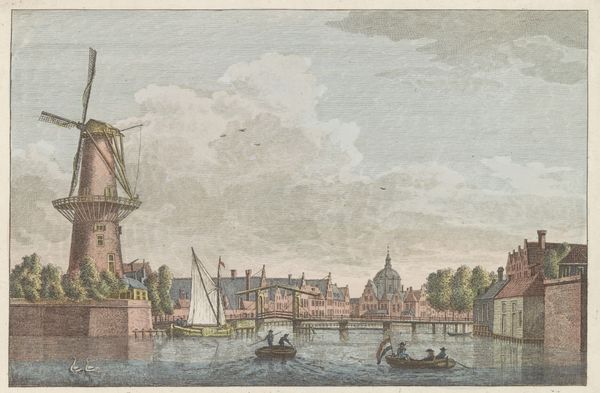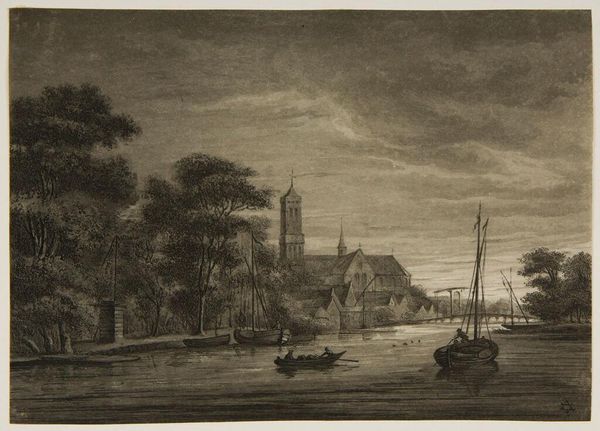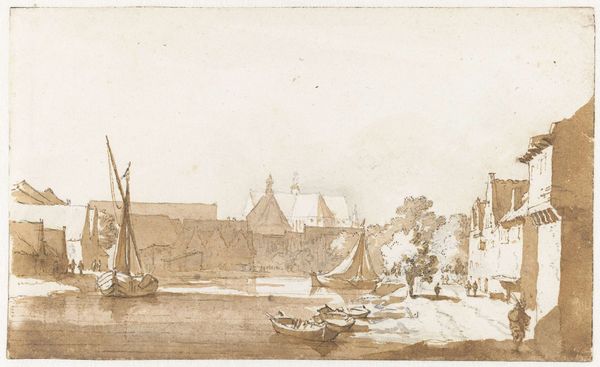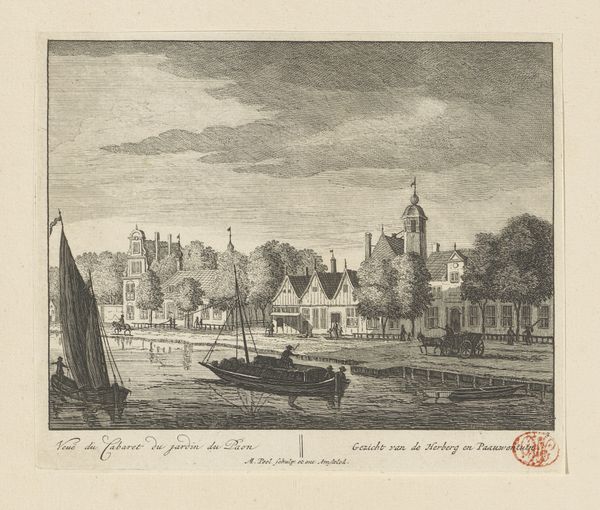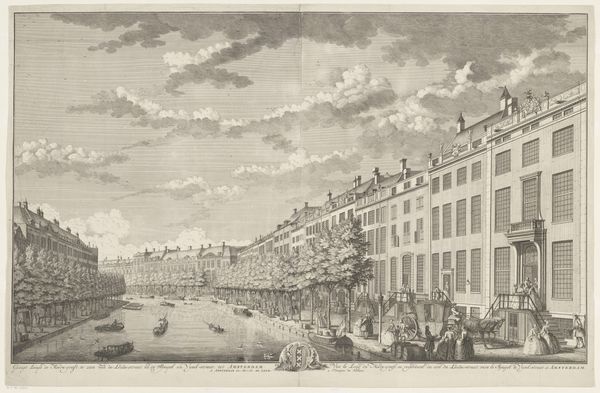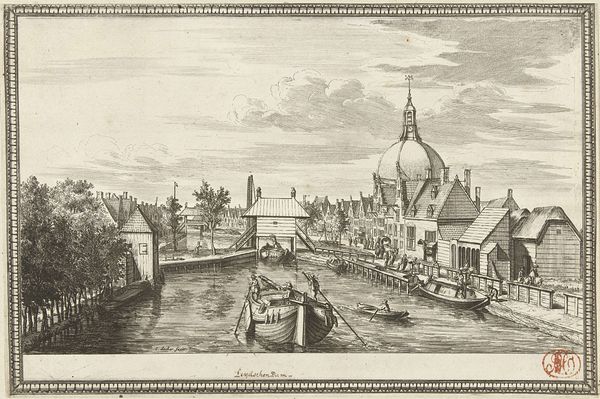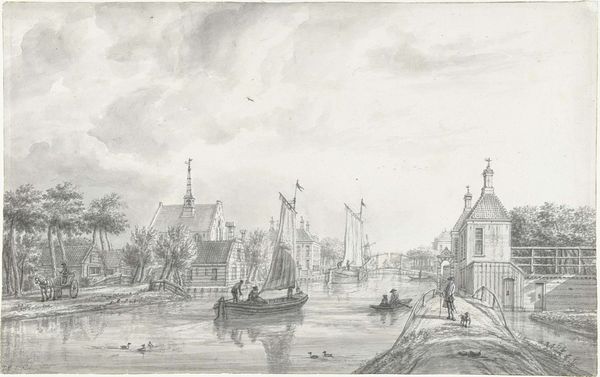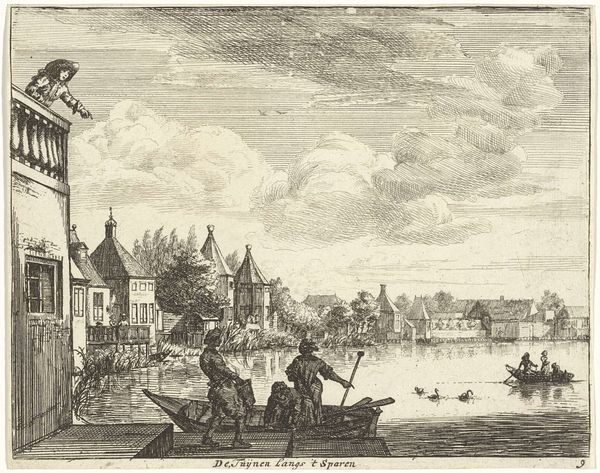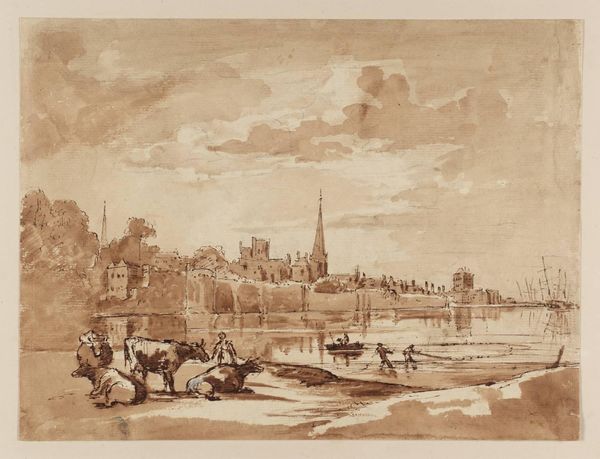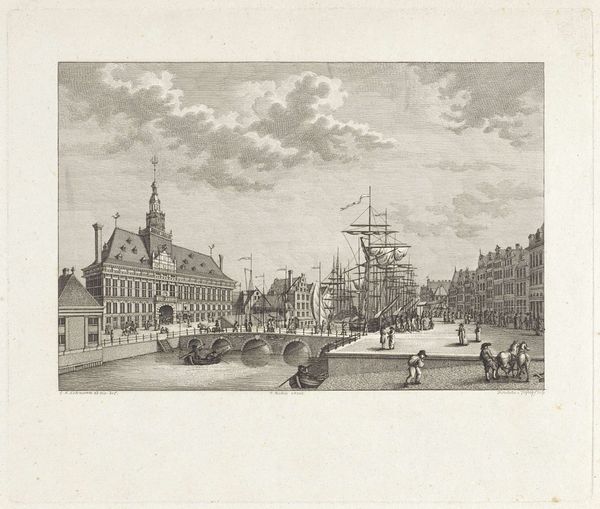
Dimensions: height 53 mm, width 73 mm
Copyright: Rijks Museum: Open Domain
Curator: Welcome. Before us hangs Paulus van Liender's "Riviergezicht", created in 1776, a watercolor painting. Editor: It’s a tranquil, almost melancholic scene, isn’t it? The monochrome palette creates this muted atmosphere; everything rendered in shades of brown, almost like a faded photograph. Curator: Indeed. Van Liender captures a slice of Dutch Golden Age life, portraying river commerce in a way that reveals the integral role waterways played in their society. This painting is part of a larger artistic interest of showcasing urban life in Dutch painting during the era. Editor: And it highlights how labor permeated even seemingly picturesque settings. Look at the ferry, the horse tethered pulling the barge, figures working. The entire infrastructure relies on the movement and effort of animals and laborers. Curator: Exactly! These are genre scenes interwoven into the landscape, reflecting the economic engine powering these cities. Notice the architecture—the step-gabled building indicative of Dutch design of that time. It anchors the whole scene and helps identify the landscape’s culture. Editor: I see the labor too in the application. Watercolors require precision and control of material, layer upon layer. There's planning here, from building a sense of depth to detailing reflections in the water, even if restrained by a rather limited palette. Curator: The subtle gradation of the wash creates an almost ethereal sky, common in Dutch landscape painting which, again, brings in these societal ideals of grand and sweeping scope alongside regular life. It's both specific and universal in its reach. Editor: It brings a certain starkness, however muted, by simplifying color—pushing the focus toward the relationship between worker and the world constructed by those efforts, reflecting the values ascribed to materiality, labor, and local life in the Dutch Golden Age. Curator: Agreed. It encourages us to reflect on the everyday lives that underpinned larger historical narratives. Editor: And on the labor behind representing those lives on paper. Curator: Thank you for this nuanced perspective. Editor: The pleasure was all mine.
Comments
No comments
Be the first to comment and join the conversation on the ultimate creative platform.
